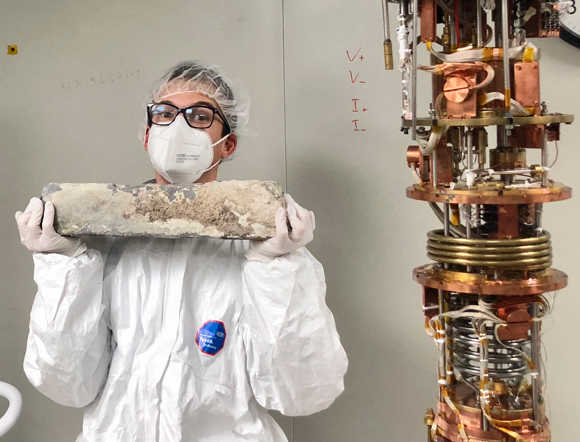
Using ancient Roman lead to build a state-of-the-art observatory to detect neutrinos from core-collapse supernovae is the ambitious goal of the RES-NOVA project which has been awarded 2.7 million euro in funding by the European Research Council (ERC). The project is led by Luca Pattavina, a researcher at the National Institute for Nuclear Physics (INFN), one of the winners of the Consolidator Grants 2022 recently awarded to 321 excellent young scientists to support them in consolidating their scientific careers.
“Thanks to my international experiences, but, above all, thanks to the unique infrastructures at the Gran Sasso National Laboratory of the INFN and thanks to the Physics Department of the Technical University of Munich, I was able to carry out the first measurements that demonstrated the feasibility of the project,” explained Pattavina, who also pointed out: “The result achieved is the fruit of a joint effort by many Italian, German and Ukrainian collaborators. In fact, the first detector prototypes were produced in Ukraine before the war broke out.”
The study aims to increase the chance of observing supernova explosions: extremely rare events during which a large amount of energy is released in the form of neutrinos. These particles – which have no electrical charge and almost no mass – do not interact much with other matter. They are therefore extraordinary messengers, able to provide direct information on the processes that take place inside stars. After all, neutrinos are elusive particles, very difficult to detect. RES-NOVA will hunt for neutrinos using lead, whose nuclei contain a high number of neutrons, which will increase the chance of a neutrino interacting with the detector by about 10,000 times compared to conventional techniques.
Specifically, the project involves the use of lead from ingots recovered from a Roman ship sunk off the coast of Sardinia 2000 years ago. The goal is to develop a small but extremely sensitive neutrino detector, able to reveal 90% of the potential supernovae of our galaxy, laying the foundations for a new generation of European neutrino telescopes.

